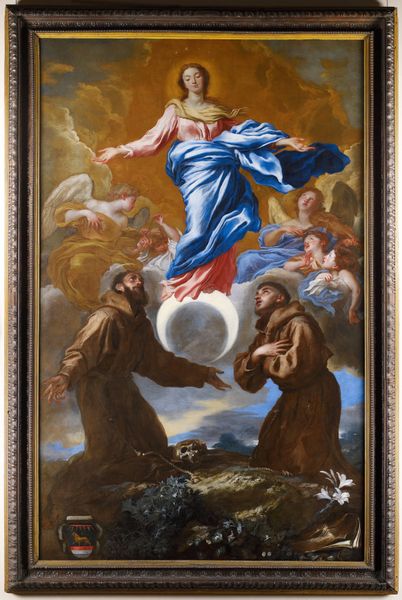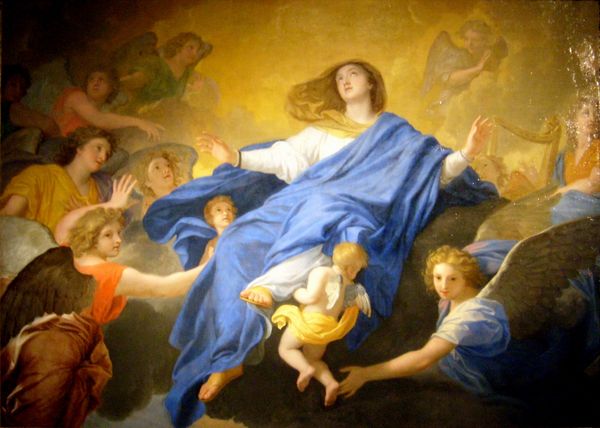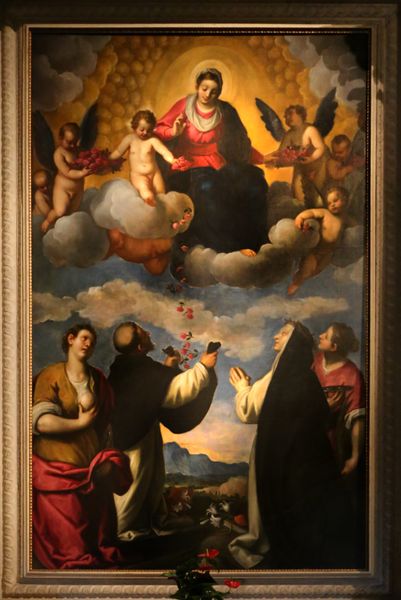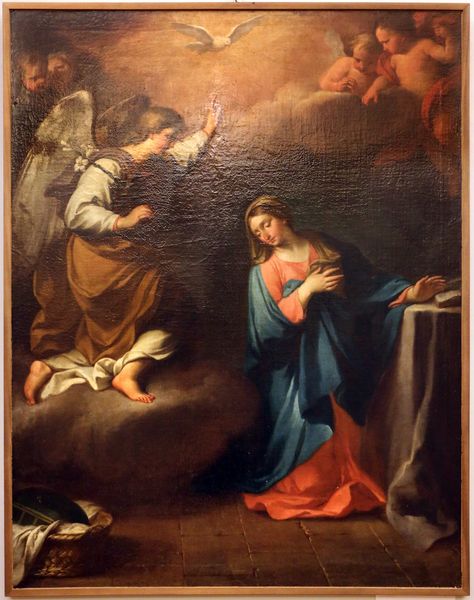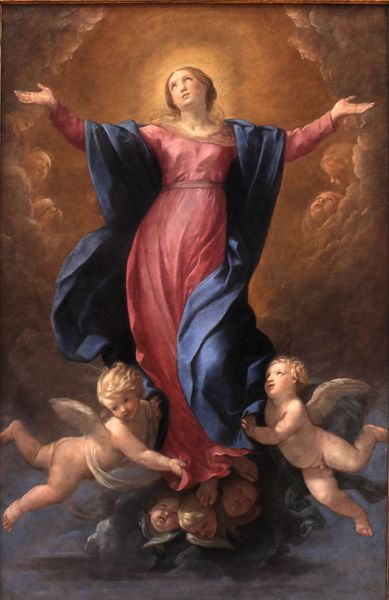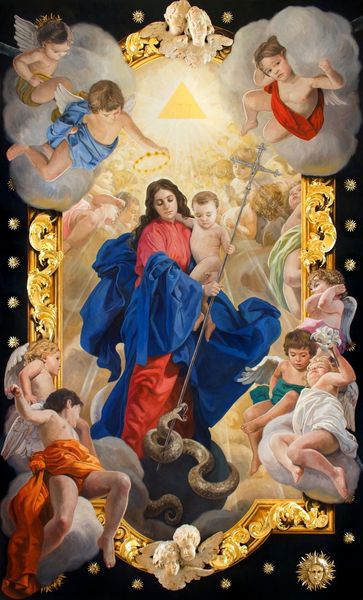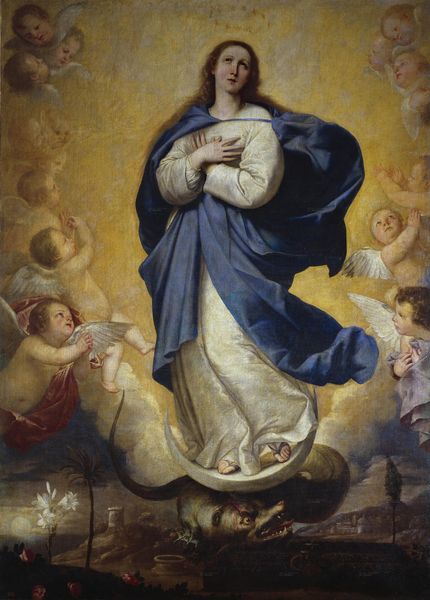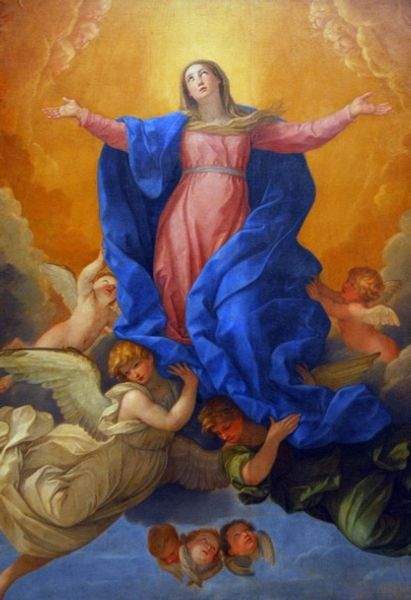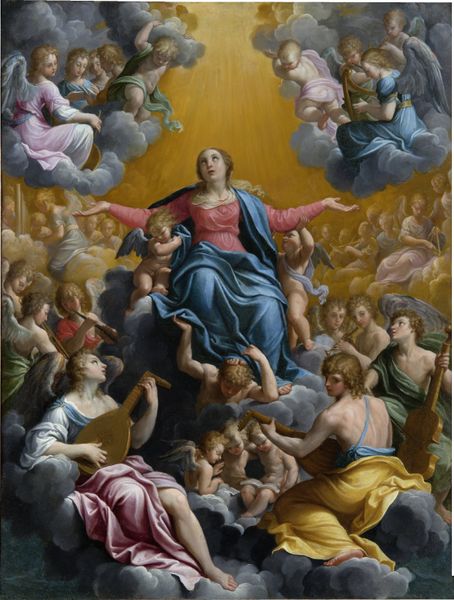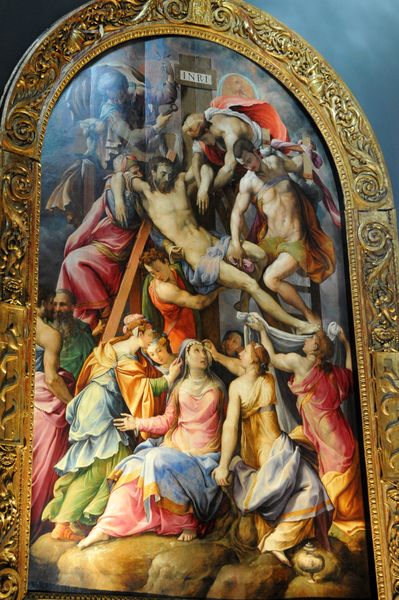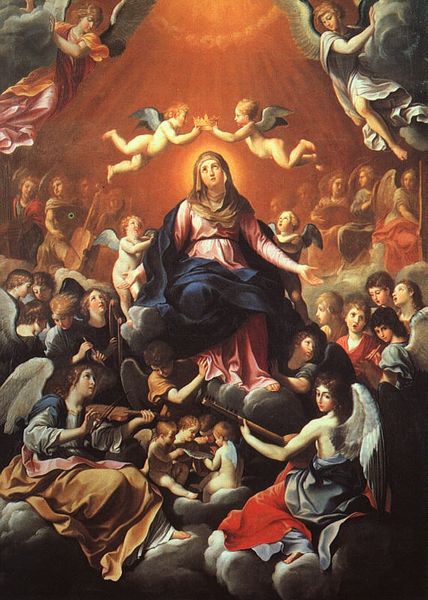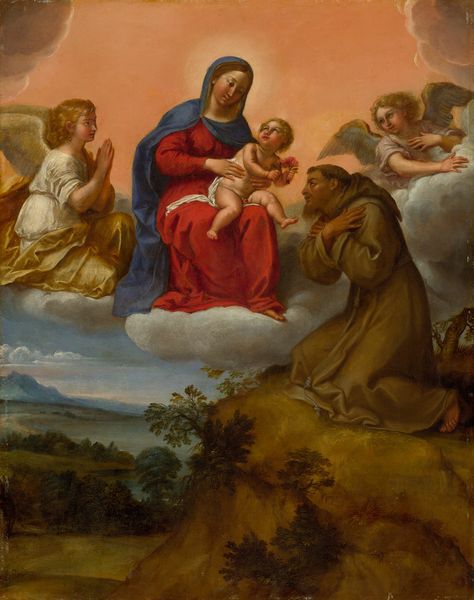
painting, oil-paint
#
portrait
#
baroque
#
painting
#
oil-paint
#
oil painting
#
history-painting
#
italian-renaissance
#
portrait art
Copyright: Public domain
Pompeo Batoni painted this Madonna and Child amidst a heavenly host of angels in the 18th century. Observe how the Christ Child holds a small cross, a symbol of his future sacrifice, while being cradled by his mother, the Virgin Mary, who looks up to heaven. This image resonates with a long tradition, echoing Byzantine icons where Mary is the "Theotokos," the God-bearer. Yet, this is not merely a static repetition. The tender embrace and upward gaze remind us of the "Pietà," evoking a sense of maternal love and foreboding grief. Consider, too, how the surrounding angels, reminiscent of classical cupids, create a scene of divine joy, akin to the angelic musicians found in Renaissance paintings. The cross held by the infant Jesus, though small, becomes a potent symbol of faith and redemption. It connects us to centuries of Christian art, where the cross embodies both suffering and salvation. Think of the crucifixion scenes by Grünewald or Mantegna – the cross, an emblem of agony, is transformed into an object of reverence, a testament to the enduring power of belief. The emotional depth conveyed in this work engages the viewer on a subconscious level, connecting us to shared cultural memories. These symbols do not progress in a linear fashion, but instead resurface, evolve, and take on new meanings in different historical contexts.
Comments
No comments
Be the first to comment and join the conversation on the ultimate creative platform.
